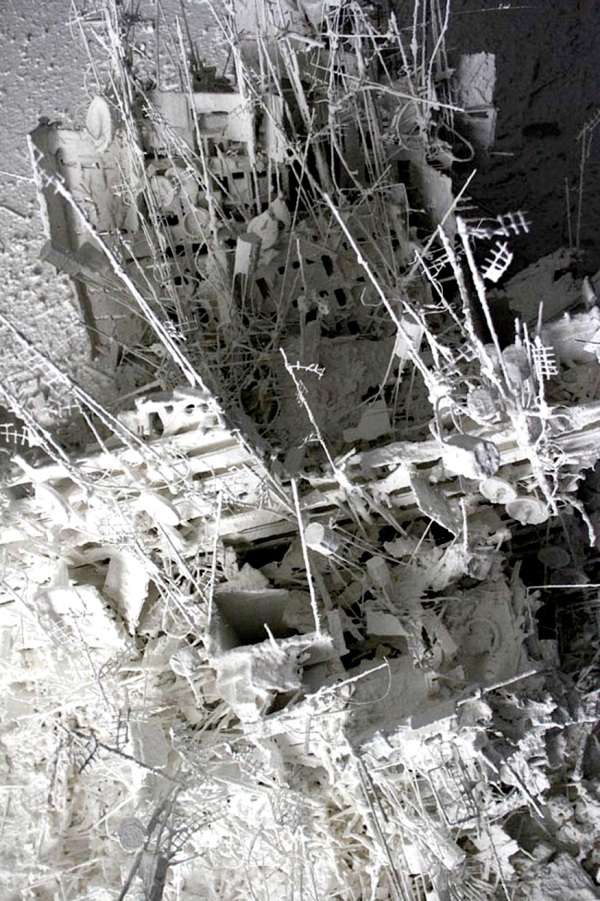UNREAL RUINS
The British artist Gerry Judah makes detailed scale models of urban building ensembles, then carefully smashes them to resemble bombed-out fragments of cities. His final touch is to sanitize them by painting everything white, abstracting them into sculptures, but not quite. When we see them, the first thing we think of is not abstract shapes and shadows, but representations of blasted buildings, sites of human habitation, suffering, and loss. What is the artist really up to?
Elsewhere on this blog, I have written about “aestheticizng violence” and “terrible beauty,” discussing artists’—and occasionally an architect’s—risky depictions of violence, destruction, and tragedy, always for a reason. The risky part is taking the chance that the exploitation of such events is worthy of their seriousness. Theodor Adorno said, “There can be no poetry after Auschwitz,” meaning that in a world where Auschwitz happened, no ‘poem’ can avoid trivializing its universal tragedy. Whether we agree with him or not, we take a point. Those who take the risk will be criticized or condemned by anyone thinking anything like Adorno, and even those praising such work will do so with a certain discomfort. To withstand the criticism and qualified approval, the artists must have a strong sense of personal mission, believing their works are necessary to in some way help to heal the wounds caused by violence and destruction. If the intention is only to create interesting, attractive, salable objects, then their exploitation is not, in my opinion, justified.
Gerry Judah calls his white canvases three-dimensional paintings. He shows them in art galleries where, presumably, they are sold. He says that he is inspired by the destruction caused by war, as well as the horrendous human consequences. He implies that he hopes these paintings will move people to put an end to war.
The problem I have with this intention is that these works are far too attractive to stir people’s compassion for war’s victims, or the loss of culture, or repulsion at the lust for violence. Geoff Manaugh over at BLDGBLOG calls them “gorgeous.” There is a vital edge missing, something that cuts below the surface, laying open hidden layers, revealing disturbing emotions or ideas. It’s for the artist to say what these might be, but I think the problem begins, materially, with painting everything white and calling the work finished. Conceptually it begins with thinking that ruins are the subject.
LW
.
About this entry
You’re currently reading “UNREAL RUINS,” an entry on LEBBEUS WOODS
- Published:
- April 5, 2011 / 11:37 pm
- Category:
- Lebbeus Woods
- Tags:




7 Comments
Jump to comment form | comment rss [?] | trackback uri [?]